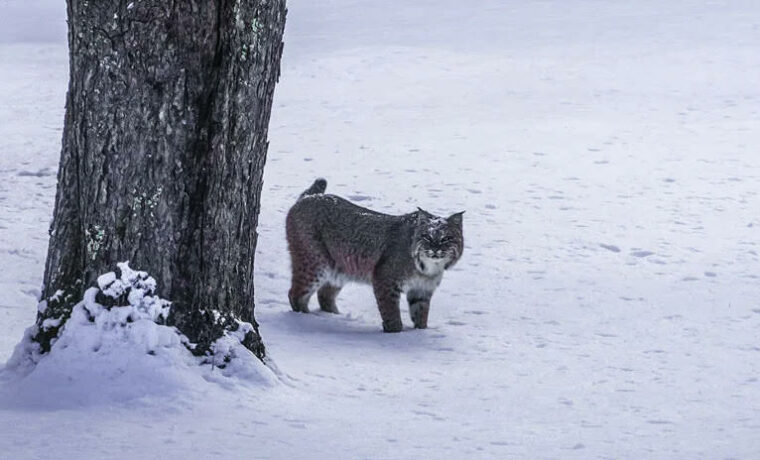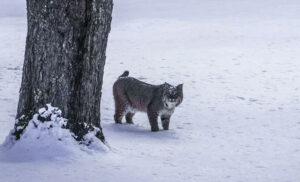
The Bobcat: Secretive Wild Cat
Story by Donald Partelow
Photograph by Paul Colburn
Master Wildlife Conservationist, Paul Colburn, conducted an online lecture / PowerPoint presentation on the natural history of bobcats for the Pawling Library on August 15.
Our presenter gave an extremely detailed overview of this beautiful, solitary animal, that tends to be most active nocturnally, especially at dusk and dawn. He discussed every aspect of the animal from its behavior, habitat, diet, and reproduction, as well as current scientific studies.
Mr. Colburn began his program by asking if anyone had ever seen a bobcat, because more and more sightings are occurring. One family, who attended the program, recently saw a bobcat in their backyard in Pawling. It’s a thrilling experience to see them in the wild. Their appearance is striking. And the eyes of a bobcat are stunning. They primarily rely on sight and hearing to hunt. Their sense of smell is not very good.
During the program we learned that although they’re only 2-3 times the size of a domestic house cat, a bobcat can take down very large prey such as deer. Their diet, though, consists mainly of small to medium size rodents and other mammals.
“The history of the bobcat is married to the forest,” said Mr. Colburn. He explained that when the first settlers from Europe came to America, they immediately began clearing land for farming, fuel, housing, etc. The old growth forests (trees that never had been harvested to any appreciable degree) were about 100% in the year 1650. Within two centuries the forests were cleared and reduced in size to approximately 20%. This had a disastrous effect on bobcats and countless other species.
In addition to the loss of habitat, the fur of bobcats was once highly sought after. By 1972 bobcat numbers had greatly declined, and it was decided that year that the bobcat would be a protected species and hunting it would be prohibited.
It is believed that the bobcat has existed in North America for approximately 4 million years. They are smart and adaptable animals. Since protection was put into place, in little over a half century, their population has rebounded. Bobcats have done extremely well. How fortunate for our country, our world, that this secretive wild cat is still with us and not in danger of extinction.
“Thank you for offering the absolutely terrific bobcat presentation,” we were told by one participant. “The presenter was great and I learned so many interesting bobcat facts.”
Paul Colburn is a graduate of the Connecticut Master Wildlife Conservationist Program and has provided hundreds of wildlife presentations on animals that include not only bobcats but black bears, fishers, white-tailed deer and the eastern coyote, for a wide variety of public and private organizations.

